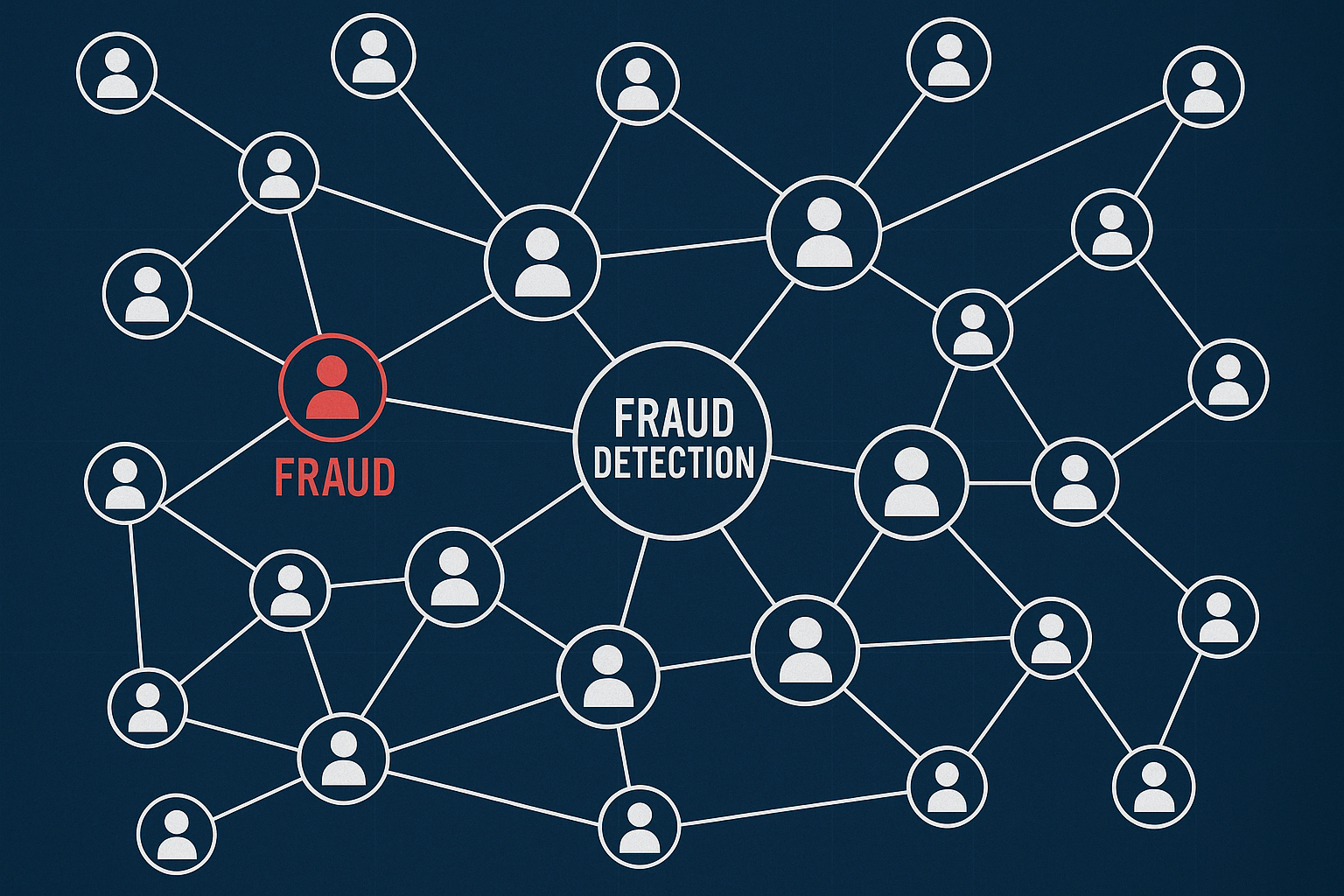Fraud Rings, Exposed: Graph + LLM Agents for AP/AR and Procurement Anomalies

Billions are lost each year to procurement and AP/AR fraud. Traditional, rule-based tools struggle to keep pace with evolving threats. Enter graph-based AI, paired with powerful LLM agents: this combination leverages deep relationship mapping and language intelligence to surface subtle, multi-hop fraud rings — and explain their results in human terms.
Why Graph-Based AI Uncovers Hidden Fraud
Standard vector-based AI excels at pattern matching but struggles with mapping intricate connections across data — like when multiple vendors coordinate bids or shell companies funnel payments through common accounts. Knowledge graphs, built from AP/AR, procurement, and HR data, create a network where vendors, invoices, employees, and bank accounts are explicitly linked by relationships.
In this system, LLM agents:
- Traverse the graph to find indirect connections (multi-hop reasoning)
- Generate plain-language explanations for every flagged anomaly
- Suggest investigation workflows and assign risk scores
Benchmarks from leading consultancies and AWS partners report over 35% better precision detecting complex procurement fraud versus vector search alone.
Modern Procurement Fraud: What You’re Up Against
- Vendor Collusion: Ostensibly independent vendors sharing addresses, bank accounts, or phone numbers
- Duplicate Invoicing: Same or nearly-identical invoices submitted across periods, vendors, or entities
- Shell Entity Creation: Fraudsters registering multiple legal entities to divert payments or win contracts
- Internal/External Collusion: Employees with hidden relationships to vendor companies
Blueprint: Building Your Graph-LLM Fraud Detection System
- Data Integration
- Ingest ERP, procurement, vendor master, payment, and HR data
- Entity Resolution
- Deduplicate vendors with fuzzy matching on business names, addresses, bank accounts
- Knowledge Graph Construction
- Model vendors, purchase orders, payments, employees, and ownership relationships
- Track multi-level ownership and indirect control
- Pattern Definition
- Define red-flag graph patterns: shared bank accounts, approval loops, split invoices
- LLM Agent Layer
- Enable agents to answer: "Explain why Vendor A and Vendor B may be colluding", or "What is the risk score for Invoice X?"
- Human-in-the-loop
- Score flagged anomalies; high-risk cases are escalated with evidence and LLM-written explanations
Metrics and Outcomes
- Detection Precision: +35% over vector-only methods
- False Positive Rate: Reduced by 60% (from benchmark case studies)
- Investigation Speed: Up to 40% faster from copilot-generated reports
- ROI: $2M+ in prevented losses annually for mid-market enterprises
Implementation Best Practices
- Use cloud-native graph databases (Neo4j, Amazon Neptune, TigerGraph)
- Deploy LLMs with clear prompt engineering and feedback loops
- Uphold data privacy and compliance: implement RBAC and audit trails
- Start with a pilot (e.g., high-risk vendor types), then scale
The Future: Intelligence That Fights Back
By combining knowledge graphs with LLM agent reasoning, organizations illuminate the fraud rings that once operated in shadows. Explainable AI enables not just detection, but faster case closure and much stronger ROI. As attackers evolve, so must our defenses.
Want to protect your procurement workflows? JMK Ventures deploys advanced GraphRAG and LLM solutions for finance teams. Contact us for a tailored demo and see how AI turns AP/AR defense from reactive to proactive.
%20(900%20x%20350%20px)%20(2)%20(1)%201%20(1).svg)

%20(900%20x%20350%20px)%20(4).png)



